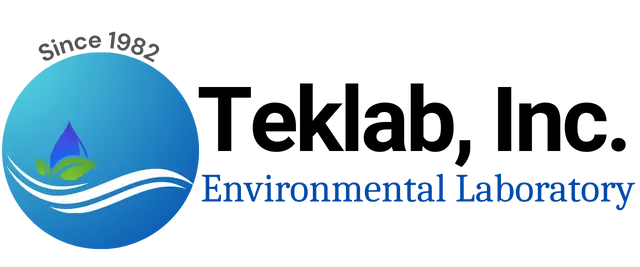Precise and Accurate Pharmaceutical Effluent Analysis
Pharmaceutical Effluent Testing, as mandated by 40 CFR 439, is essential for industries that discharge wastewater containing pharmaceutical contaminants.
These Effluent Guidelines are a critical component of regulatory compliance, integrated into NPDES (National Pollutant Discharge Elimination System) permits for direct dischargers and into permits or control mechanisms for indirect dischargers, under programs like the Pretreatment Program.
This ensures that facilities managing pharmaceutical waste are controlling their effluent releases to prevent harmful contamination of water bodies and groundwater to better protect the environment against the characteristics of toxicity that may be present.
📌In addition, Teklab is a proud NELAC accredited environmental testing laboratory, offering specialized analytical services specifically designed for the pharmaceutical manufacturing industry (PMI) and the regulatory agencies overseeing it.
Our comprehensive services include wastewater effluent and groundwater monitoring, with a particular focus on substances regulated by the EPA, using methods such as EPA 1666.
This method encompasses a broad range of volatile organic compounds (VOCs) frequently encountered in pharmaceutical waste streams.
We have expanded our expertise to go beyond conventional environmental testing, as we regularly perform advanced industry-specific analyses for other environmental laboratories and clients in the pharmaceutical sector. Teklab’s Volatile Organics department is equipped to handle the precise demands of pharmaceutical effluent testing, employing advanced methodologies such as EPA 524.2 and EPA 1671 for the detection and quantification of key contaminants.
Compounds commonly analyzed in this type of testing include, but are not limited to:
Method 1666 Analytes
Unmatched Reliability in Specialty Environmental Testing
These compounds, along with others specified by EPA methods, are critical indicators of potential environmental impacts resulting from pharmaceutical manufacturing activities.
Ensuring their proper identification and quantification is essential for regulatory compliance and environmental protection.
We understand the complexity of pharmaceutical effluent testing and the high standards required by both federal and local regulations.
By providing fast, accurate, and reliable analysis, we support our clients in maintaining compliance with 40 CFR 439 and other relevant guidelines.
Our advanced testing capabilities and quick turnaround times make us a trusted partner for pharmaceutical companies and environmental testing laboratories alike.
For more information on our testing capabilities:
📞 (618) 344-1004 or Toll-Free: (877) 344-1003



